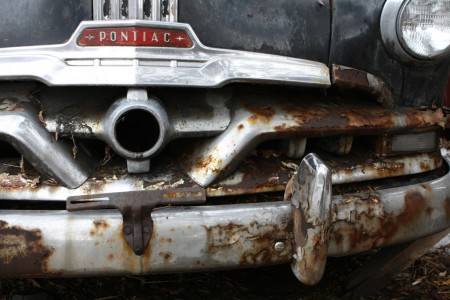I have written previously about the climatic importance of black carbon – tiny particles of soot, mostly from burning diesel and biomass, that have a warming effect on the climate. This effect can be most acute when the black carbon falls on snow. It absorbs sunlight and accelerates melting. Andreas Stohl, from the Norwegian Institute for Air Research, has tracked pollution from satellite data and identified agricultural burning in Russia, Ukraine, Belarus, and Baltic states as major sources of black carbon that ends up in the Arctic. Stohl and others have also applied trajectory models to determine how pollution from different regions ends up in the Arctic.
As shipping routes become more open, with the vanishing of multi-year sea ice, diesel-burning ships risk becoming a larger source of black carbon in the region. As one paltry step towards slowing the demise of the Arctic as we know it, the coastal states of the Arctic ocean should insist on better particle traps for vessels, both by imposing standards for new construction and requiring retrofits. Germany, Austria, and Switzerland all already have legislation in place requiring such filters. In addition to the climatic benefits, such filters could also benefit human health. Investigations between 1993 and 1998 showed that such filters “can intercept at least 99% of the sub-micron particulates in the range of heightened pulmonary intrusion.”
Governments could also insist on the use of cleaner forms of diesel that generate less black carbon. It is bad enough that oil and gas exploration in the Arctic might accelerate warming – to say nothing of the risks from methane. We don’t need little low-albedo specks of soot making things even worse.


Bunker C, or grade 6 fuel oil, is a big problem for black carbon.
“Though it sounds bizarre, mixing water into the fuel helps it to burn better. The heat of combustion breaks water molecules up. The resulting hydrogen atoms help to split hydrocarbon molecules, making them more combustible, while the oxygen released goes on to combine with the carbon, ensuring that more of it burns.
All this has, in truth, been known for years. But previous attempts to turn it into practical technology have failed. Reinhard Strey of the University of Cologne is, however, having another go. He thinks he has cracked the main (and obvious) difficulty—that oil and water do not easily mix.
…
The result, when it is burned, is the near-complete abolition of soot, and a reduction of up to 80% in nitrogen-oxide emissions. The surfactant itself also burns without creating emissions beyond water, carbon dioxide and nitrogen.
The next stage is to test the mixture in the real world. MTU, a German engine-builder, is now looking into the matter. If all goes well, though, the days when a smoking funnel was an icon of every child’s drawing of a ship on the horizon may be numbered.”
Pollution in the Himalayas
Time to call the sweep?
Soot gets everywhere. Even into the world’s highest mountains
Nov 18th 2010 | Kathmandu | from PRINT EDITION
THE Himalayas and the adjacent Tibetan plateau are sometimes referred to as the Earth’s third pole, because of the amount of ice they host. They are also known as Asia’s water tower. Their glaciers feed the continent’s largest rivers—and those, in turn, sustain some 1.5 billion people. Many studies suggest, though, that the Himalayan glaciers have been shrinking over the past few decades. This has usually been attributed to rising air temperatures, but climate researchers have now come to realise that tiny airborne particles of soot and dust are also to blame. Being dark, they absorb sunlight. And that warms their surroundings.
Near cities, and in regions like South-East Asia, where people are clearing vegetation by burning it, soot is expected. But as Angela Marinoni of the Institute of Atmospheric Sciences and Climate in Bologna explained to an audience at the 2nd Third Pole Environment Workshop in Kathmandu on October 27th, the high Himalayas are also under an onslaught from this sort of pollution. Even at altitudes above 5,000 metres (16,400 feet), soot is widespread. And when it lands on glaciers it accelerates their melting.
Dr Marinoni and her colleagues have been examining Himalayan soot since 2006. In that year the Nepal Climate Observatory – Pyramid, in the Khumbu valley, began a full-time study of aerosol particles, soot among them. The researchers’ initial intention was to take advantage of what they assumed would be the pristine conditions found at such high altitude (the observatory is 5,079 metres above sea level) to measure typical background conditions of the atmosphere. Instead, they were surprised to find a thick haze, loaded with soot, smothering the mountain slope. In the rainless pre-monsoon months between January and May, about one day in five saw the Khumbu valley blanketed in a dense brown cloud.